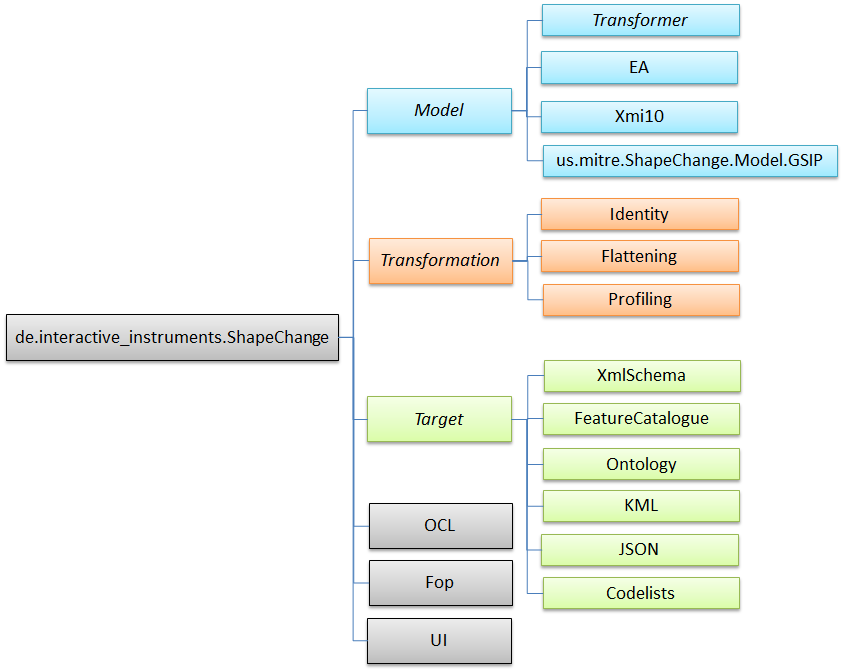Packages
Overview
ShapeChange is a Java application distributed as a ZIP archive.
The software, run from the command-line, is provided with a configuration file that defines the parameters of the transformation, including the format and location of the input file, log settings, and output parameters (format and output directory, among others). When the utility is initialized, the appropriate import module is first called to read the application schema in UML (whether in XMI, EAP or GSIP format) into internal memory. The software then processes the model. The model can undergo a number of transformations before it is turned into one or more target representations (the default being a GML application schema consisting of a set of XML Schema documents). Finally, the processed model is output to the chosen target representation(s) as specified in the configuration file, and error, warning and informational messages are written to a log file.
Package Overview
The ShapeChange software is modular, allowing for the specification of additional input formats, transformations or targets by implementing the underlying interfaces in the de.interactive_instruments.ShapeChange.Model package.
The following diagram is an overview of the package dependencies within ShapeChange:

The package de.interactive_instruments.ShapeChange contains the main classes of ShapeChange.
The package de.interactive_instruments.ShapeChange.Model is the main extension point on the input side. It specifies an interface for all sources of models that ShapeChange can process. Currently there are three types of models supported:
- XMI 1.0 / UML 1.3 models as exported by Rational Rose (Unisys exporter) or ArgoUML
- Sparx Systems Enterprise Architect models accessed via the Enterprise Architect Java API
- GSIP (GEOINT Structural Implementation Profile)-compatible models stored in a MDB (Microsoft Access Database)
It is also possible to perform additional model transformations before the conversion to target representations, by implementing the de.interactive_instruments.ShapeChange.Transformation.Transformer interface. Available transformations are described in more detail here.
Note: The de.interactive_instruments.ShapeChange.Model.Transformer interface was defined before work on the general transformation mechanism started. Model transformations should be realized via the general mechanism.
The package de.interactive_instruments.ShapeChange.Target is the main extension point on the output side. It specifies an interface for all output derived from models, e.g. XML schemas. These are described in more detail here.
In addition, there are helper packages for specific purposes, e.g. processing OCL constraints, using FOP in targets or for a graphical user interface to edit ShapeChange configuration parameters during runtime.